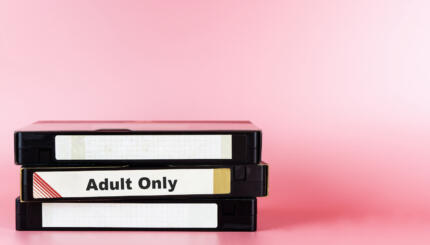Jews read sections of the Torah each week, and these sections, known as parshiyot, inspire endless examination year after year. Each week we will bring you regular essays examining these portions from a queer perspective, drawn from the book Torah Queeries: Weekly Commentaries on the Hebrew Bible and the Torah Queeries online collection. This week, Rabbi Joshua Lesser considers the discriminating qualifications for the priesthood, and what they mean for the LGBT and disabled communities.
Creative Common/lifeonthe inside
An Israeli friend of mine had a provocative part-time job as a “selector” for TLV, a gay nightclub in Tel Aviv. He would point to people waiting behind the velvet rope and grant them access to the club. Friends were shown a certain favoritism; however, much like the selection of the Cohanim in
Parashat Emor
, those with “defects” were often prohibited from offering up their gifts to the dance floor gods. In Leviticus 21, the Torah specifies quite a long list of physical disabilities and ailments that would disqualify people from serving as priests. Long acknowledged as one of the more painful parts of the Torah, it elevates the perfect male body as one that is best to ritually serve God. Before the Hellenistic model of male beauty, there was Leviticus and the Temple cult.
As a regular attendee of the temple we call “the gym,” it is abundantly clear to me that the idealization of the aesthetic male form as godly is something that restricts us all, particularly gay men, even though gay men — to their own personal detriment — are often the most avid supporters of this kind of body worship.
Clearly, as human beings who age and whose bodies change over time, such an emphasis on embodied perfection inspires dread in all of us and has the potential to make us fear or ignore people who remind us of the truth of our imperfect bodies. In leading diversity workshops, people tend to point out similarities between the oppression of GLBT and disabled folks. For instance, they notice that in both communities there is a preponderance of people who are different from their families of origin, leaving both GLBT and disabled people at risk of having family members reject them or discriminate against them. Nor are their families able to equip them to engage in the so called “normative” world. There are many other similarities between the forces of heterosexism and ableism that create barriers for societal participation. Despite these issues and other legitimate comparisons, I have found that both GLBT and disabled people often shun the similarities.
While my colleague at the Interfaith Disabilities Network often addresses the homophobia in the disabled community, it is more appropriate for me to speak about the ableism in my own community. When I first began doing diversity work, I too was uncomfortable with the comparison. Like other gay men, the comparison made me cringe because of my own body issues and my self perception that I was failing to live the gay ideal. I also said things like “being queer is an asset, not a liability,” to avoid having my sexual orientation be seen as a defect. I was missing a valuable point: whether or not I saw it as a disability, it is how others often perceive sexual orientation — as something lacking. Moreover, it reveals how I once saw people with disabilities — also as people with something lacking, instead of understanding that our society was deficient in its inability to adapt to the fullest range of human bodies and minds.
When recognizing that it is society’s understanding that is what needs to change, it creates a clearer pathway for us to find each other as allies. Who better to understand each other in dealing with our parents’ (initial) disappointment when they discover their child is not who they had imagined? When we look at how some disabled people’s civil rights around marriage and adoption are limited in ways similar to gays and lesbians, who better to create solidarity? When looking at the history of persecution, particularly during the Nazi regime, we see that the same arguments, false logic and practices were used to target both communities. Both communities have had to redefine what sex means despite the larger community’s grave discomfort with thoughts of either group actually having sex. But it is my belief that everyone ultimately benefits from this conversation, especially if we listen. Furthermore, both communities are saying accept us as we are. We are created in God’s image as much as the perfect-bodied Cohanim and have lessons to teach the world.
A few years ago, I was helping a child prepare for his bar mitzvah, which was on Shabbat Emor. As we were reading together the text from Vayikra/Leviticus, we came across the difficult part of the portion. As he read: “Adonai spoke further to Moses: …No man of your offspring throughout the ages who has a defect shall be qualified to offer the food of his God,” (Lev. 21:16-17) he looked at me said, “I wouldn’t have been able to be a Cohen back then, would I?” Asking why he felt this way, he responded, “Well, I have dyslexia pretty badly. That’s a defect, right?”
This became the question we wrestled with for the rest of our preparation. He wanted to address this injustice, but another question emerged, perhaps even more challenging than the others. I asked him to think about how I view my queer identity, with all of its challenge and pain, as an asset: “What, if any, benefits come with having dyslexia?”
He looked puzzled at first and then he smiled. In his
d’var Torah
he ultimately spoke of how his dyslexia taught him to be more patient with others and a more compassionate person. This in turn made him a better brother, son, and friend. Just as importantly, he defied Levitcus’ narrow recognition of perfection and saw himself just as deserving to be in part of God’s worship. For me, this is what we have in store when queers and disabled people are able to come together — more of God’s perfection is revealed to a society whose ability to recognize it, is limited.
Shabbat
Pronounced: shuh-BAHT or shah-BAHT, Origin: Hebrew, the Sabbath, from sundown Friday to sundown Saturday.
Torah
Pronunced: TORE-uh, Origin: Hebrew, the Five Books of Moses.


